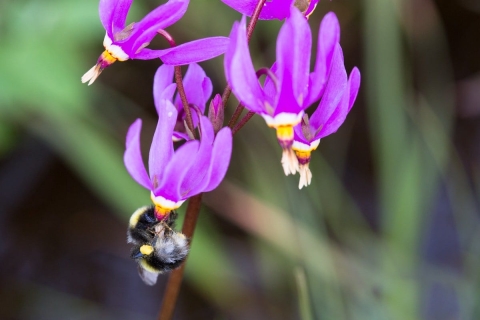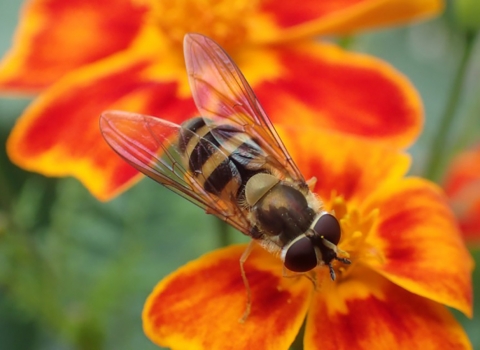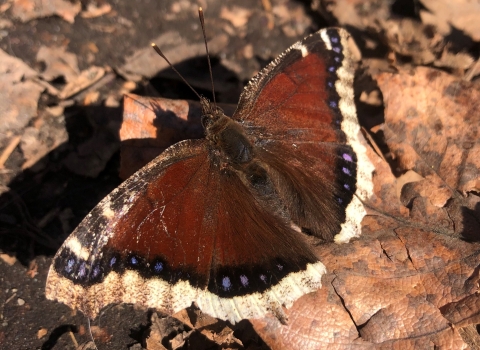Alaskan scientists are studying bees to try to better understand what species are found in the state. There is so much we do not yet know. For example, in a rare Alaskan habitat called steppe bluff, scientists recently found a species not documented in Alaska before and some bees that may be new to science.
Bumblebees (Bombus)
You know them well: the round fuzzy ones with contrasting colored bands of soft hair (typically yellow and black). Alaska has 22 known species of bumblebees.
Bumblebees are great generalist pollinators. They visit many types of plants and carry a lot of pollen from plant to plant (leading to fertilization). Many have a “pollen basket” on their modified hind leg to transport pollen.
Bumblebees are social insects. They build their nests in the ground, in abandoned burrows and under logs. The queen overwinters in the soil while the rest of the colony dies. In early spring she establishes a new nest and rears the first worker brood.
Solitary Bees
Solitary bees differ from their larger, more charismatic relative the bumblebee because they do not form hive. As their name suggests, they spend their life cycle in solitude.
Leafcutting bees (Megachilidae)
These solitary bees are named for their tendency to collect leaves to construct their nests. Nest sites include holes in stems or wood, existing cavities in old buildings, or holes in the ground. Like bumblebees, these bees feed on nectar and pollen.
Sweat Bees (Halictidae)
You might encounter a sweat bee on a hot, sunny day when they are attracted to the salts secreted in your sweat. These good, general pollinators are typically black or metallic colored, but some are bright green or dark yellow. They nest in the ground in dispersed solitary nests or densely situated nests with bees sharing a common entrance.
Mining Bees (Andrenidae)
Mining bees are a large family of bees found nearly everywhere in the world. They resemble honeybees — they typically have a dark a dark colored body with fine light brown or yellow hairs. These solitary bees don’t form nests but rather dig a single nest into the soil, hence their name. If you like wild blueberries you can thank mining bees — they’re important blueberry pollinators.
Plaster Bees (Colletidae)
The name of this solitary bee originates from the way that they smooth the walls of their nests with secretion from their mouthparts. These secretions dry into a plaster-like lining. Oftentimes, this variety of bees will not have external ways to carry pollen, so they will carry pollen in their crop (a specialized part of the foregut).
Celebrate and support native bees
All types of bees play an essential role in Alaska’s ecosystems. They ensure healthy and productive plant communities, which lead to healthy mammal and bird populations.
🐝 Create habitat for bee nests in your yard: leave a corner undisturbed with a stack of logs and rocks.
🐝 Plant an abundance of native flowers to provide food for bees.
🐝 Limit the spread of invasive species invasive species
An invasive species is any plant or animal that has spread or been introduced into a new area where they are, or could, cause harm to the environment, economy, or human, animal, or plant health. Their unwelcome presence can destroy ecosystems and cost millions of dollars.
Learn more about invasive species by cleaning dirt and plant material out of shoes, bikes, and vehicles before moving between trails or towns.
🐝 Pause and stare at a bee visiting a flower. Do you notice all the different colors? Alaska has over 100 species of bees. Bring this polar bumble bee to life through coloring!
In Alaska we are shared stewards of world-renowned natural resources and our nation’s last true wild places. Our hope is that each generation has the opportunity to live with, live from, discover and enjoy the wildness of this awe-inspiring land and the people who love and depend on it.









